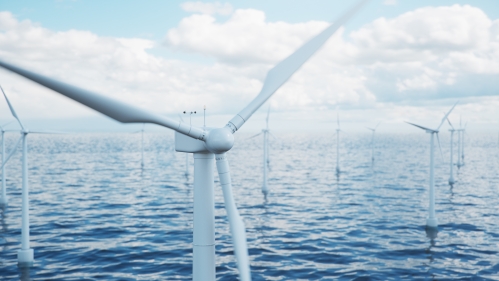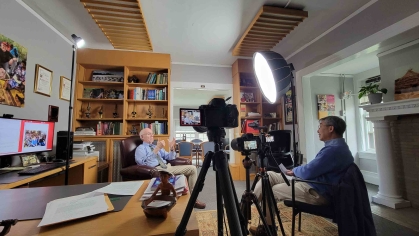Optimizing Wind Farm Profitability

By 2030, more than 10 million homes will be powered by offshore wind turbines, according to a Biden administration plan designed to stall climate change and accelerate a transition to clean energy.
Yet the transition to wind energy presents an immense challenge in terms of cost-effectiveness: a balance must be achieved between revenue-producing electricity generation and the long-term expense of asset maintenance.
With help from a recent three-year, $450,000 Grant Opportunities for Academic Liaison with Industry (GOALI) grant funded by the Electrical, Communications and Cyber Systems division of the National Science Foundation (NSF), Aziz Ezzat, industrial and systems engineering (ISE) assistant professor and director of Rutgers’ Renewables and Industrial Analytics (RIA) research group will address this challenge.
“I can’t stress how fortunate I am to have joined Rutgers in 2019 as offshore wind energy was about to take off in the north Atlantic region,” he recalls. “One of the strategic thrusts of RIA is to look at the needs of this emerging sector and establish strong industry partnerships. This award comes at the right time to pursue challenging – and impactful – research avenues that bridge data and wind energy sciences through an ISE lens.”
As principal investigator (PI), Aziz is collaborating with co-PI Joseph Brodie, the director of atmospheric research in Rutgers Center for Ocean Observing Leadership; PI Murat Yildirim of Wayne State University; co-PI Feng Qiu of Argonne National Lab; and co-PI Mina Mousa, a senior analytics engineer at Cognite Inc. on “Generation versus Degradation: Striking the optimal balance for wind farm profitability via digitization, predictive and prescriptive analytics.”
According to Ezzat, waters a few miles off the New Jersey coast will be hosting ultra-scale wind turbine designs for the first time ever to help achieve state and federal offshore wind goals. “These gigantic structures – the largest rotating machines on earth – will be almost twice the height of the Great Giza pyramid, with rotor diameters twice as long as a soccer field,” he says.
“Such exciting promise, however, breeds technical challenges,” he adds. “The predictability, productivity, and reliability of wind energy are challenges hindering its large-scale integration into current electricity systems.”
Innovative solutions are needed to reduce the levelized cost of energy, which for wind energy includes high operations and maintenance expenditures. The revenue generated by harvesting wind is offset by exorbitant maintenance costs. “It is this unique trade-off that largely determines wind’s economic viability as a clean, cost-efficient source of energy – and is the overarching theme of our project.”
The team aims to create an interactive digital twin of a wind farm, leveraging Cognite’s tools and capabilities that can bind to the Rutgers and Wayne State teams’ prediction and decision models within an end-to-end digitization platform. “It will enable operators to make cost-effective operational decisions on the fly.”
ISE students will benefit from the award as well, through summer internships hosted at Cognite, and funding to train and support PhD students working at the interface of data and wind energy sciences.
Ultimately, Ezzat says, the team “is looking forward to contributing to the realization of the promise of wind energy through this project.”


